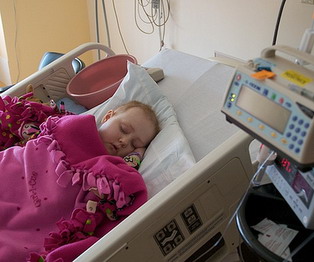Leukemia Diagnosis
The blood forming cells of the bone marrow begins to form cancer when this disease of leukemia affects them. The bone marrow cells begin to grow abnormally in quantity resulting in abundant amount of white blood cells or leukocytes that usually spread to other parts of the body.

This comes to known when the affected person is undergoing leukemia diagnosis. Irrelevant of sex, it affects both male, female and children.
According to clinical and pathological conditions it is divided in to two types. One is called acute and another one is called chronic.
In acute type, the normal cell forming tendency of the bone marrow is altered and bone marrow loses its capacity to produce mature cells. But there forms the rapid immature cell and this immature cells are produced and accumulated. These accumulated cells are sent to blood stream. And the activity of immature cell production becomes endless. This type of condition is common in children and they should be advised to go for specific leukemia diagnosis and treatment.
Against acute type, in chronic type the old and matured cells are affected. The process of abnormal cell division occurs only in old and matured cells. Unlike acute type, in chronic type the progression of the disease is slow and it takes from months to year for appearance and it can be confirmed only during leukemia diagnosis. But as in acute type, the chronic type also results in increased quantity of white blood cells. Unlike acute type, in chronic type only old people are affected normally.
Lymphocytic leukemia is the type in which the newly forming lymphocyte is affected. This affection results in complete damage to the body’s natural immunity system and the body is then unable to fight against any infection. This lymphocytic leukemia is further divided in to acute and chronic type. When compared to the year 1990, the recent year drug combination that has been used is having successful results and it is informed that there is 91 to 95 percent response rate and there is 41 to 70 percent rate of complete response.
Easy leukemia diagnosis are available now to confirm the chronic lymphocytic leukemia against past. In the past it was the only way for diagnosing CLL is taking the bone marrow biopsy. But now the blood test called cytometry is enough to identify the presence of cancerous blood cells.
Informative leukemia diagnosis:
several diagnostic tests are available now and it gives more information about the disease and it helps in treating the cancer. A simple blood test now will tell the specific genes, proteins or chromosomes of the cancerous cells and it will immediately predict the aggressiveness of the disease and about the treatment needed. This finding of high and low risk factor will help in deciding for a longer or a shorter period treatment.
Myelogenous leukemia affects the cells of the bone marrow that actually forming in to white cells, red blood cells and platelets. This myelogenous leukemia also divided again in to acute and chronic type.
Leukemia Symptoms :
The total damage of the platelet causes easy bleeding anywhere of the body with pinprick bleeding. The blood clotting mechanism of the body is damaged due to the affection of the platelet. It is well known factor that the white blood cells are totally responsible for fighting against infections and the damage occurred to white blood cells results in easier and frequent infection of the affected person and even affected by life threatening infection like pneumonia. The number of red blood cells is reduced and thereby anemia develops and dyspenia arises. Fever, excess sweating, weight loss and fatigue are common in this leukemic condition.
Risk factors :
Exposure to high level radiation may cause both lymphocytic and myeloid leukemia. Atomic bomb explosion and high level radiation used in medical treatment may cause leukemia. Frequent exposure to X-ray is also a cause for leukemia. Tobacco of any form, chemicals like benzene, certain hair dyes, certain viruses like Human T-lymphotropic virus, chromosomal abnormalities and genetic predisposition are most important risk factor for the development of the disease.
Leukemia diagnosis are made by collecting personal and family history first. Then the physical examination is done for finding out swollen lymph nodes, spleen, and liver. The complete blood count is taken to find out the high level white blood cells and low level platelet and hemoglobin. These indicated high and low levels are common symptoms in leukemia. To confirm the diagnosis the bone marrow biopsy is done. Other tests like cytogenetics, spinal tap and chest X-ray are also useful in finding the leukemia .
According to the type and severity of the disease, several types of treatment are available. Chemotherapy, biological therapy, targeted therapy, radiation therapy and stem cell transplant are the important therapies that are used to cure the disease.

